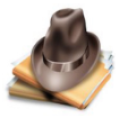Persian Music: Lian Ensemble in Jerusalem- Houman Pourmehdi Ney Solo

HOUMAN POURMEHDI is a master percussionist, well known for his diverse abilities as a musician, composer, and multi-instrumentalist. Performing and recording in numerous ensembles and at a variety of venues.
His interest in the spiritual path of Sufis introduced him to the Ghaderi Sufi order's virtuoso Daf players, such as Haj Agha Sadeghi, Mirza Agha Ghosi, and Darvish Karim, with whom he studied the heart-to-heart traditional techniques of playing Daf.
Pourmehdi designed the tuneable Dayereh which is part of the Cooperman's Artist Innovation Series of instruments.
His knowledge of traditional repertoire and intimacy with Sufi world are made to serve a very personal style of interpretation in his compositions. Along with several colleagues he has founded The Lian Ensemble. He currently lives in Los Angeles, and teaches Persian Percussion at the CalArts (California Institute of the Arts).
Pourmehdi moved to Chicago in 1988, where he founded the society for the Advancement and Preservation of Traditional Persian Music and he study Persian Music Under supervision of Dr. Mehdi Forough, it was here that he first fathomed the exciting possibilities of introducing the unique sounds of Persian instruments to American audiences.
The Society also facilitated his meeting the eminent Mohammad Ali Kianey-Nejad, who taught him the Ney (Persian Reed Pipe).


The Persian Ney
The Persian Ney (sometimes spelled as nay, or nai) is a wind instrument from Iran. It consists of a hollow cylinder with finger-holes. Sometimes a brass or plastic mouthpiece is placed at the top to protect the wood from damage, but this plays no role in the sound production. It has a very compelling and engaging sound, perhaps "gut wrenching" is the right term in English, unlike any other wind instrument.
Similar instruments also called ney are used throughout the middle east, but are blown with the lips and have a much more limited sound. These are the Arabic ney and the Turkish ney. They have one more finger hole in between the two bottom holes of the Persian ney and the tumbhole is place higher producing a note which is a semitone higher than on the Persian ney when opened. The other difference is that the Persian ney contains 7 segments whereas the Arabic and Turkish neys have 9.
A Persian ney can also be blown with the lips, but this style can not be mixed with the interdental technique as the ney sounds a semitone higher when blown with the lips. Neys have been found in Egyptian tombs dated 5000 years ago. I have been playing the Persian ney since 1994, learning mainly from listening to tapes and an occasional lesson from visiting musicians from Iran. After practicing for thousands of hours I can now play somewhat decently. I live in Vancouver, Canada, and I perform regularly with players from the local Persian community. Here is a recording of myself.
(Link )